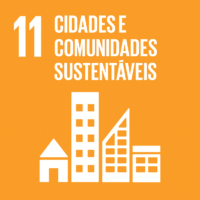Ciência_Iscte
Publicações
Descrição Detalhada da Publicação
Título Revista
Simulation Modelling Practice and Theory
Ano (publicação definitiva)
2024
Língua
Inglês
País
Países Baixos (Holanda)
Mais Informação
Web of Science®
Scopus
Google Scholar
Esta publicação não está indexada no Overton
Abstract/Resumo
Public mass events require thorough planning on allocating resources such as paramedics, police officers, urban cleaning teams, and their equipment (ambulances, patrol cars, garbage collection trucks, and other urban cleaning vehicles). Testing different scenarios of event venue layout and crowd behavior at the end of an event might be useful to plan the event and said resource allocation.
Our main objective is to model the non-urgent egress of participants at the end of an event, with possible applications for event management. That is when some resources are released (police and paramedics) and others are requested (urban cleaning teams).
Using the agent-based GAMA platform, we implemented a spatially explicit simulation model upon an extension of the Social Force Model that considers group behavior, and a novel implementation of the “social retention” phenomenon, to simulate non-urgent egress from public space mass gathering events. Focus groups with architecture, geography, and urban ergonomics experts were conducted for face validation and improvement of the model.
We present the outcome of a series of simulations of a scenario mimicking a real-life music event that took place in a square in downtown Lisbon, Portugal. Cell phone data captured during the event was used to calibrate the model. We analyzed model performance when the number of pedestrian agents increases, to assess the feasibility of using our approach in participatory discussions with stakeholders responsible for resources management.
On average, the egress evolution obtained in the simulations fit well with the evolution of cell phone counts captured during the event. The behavior of groups of agents evidenced real-life phenomena, such as the persistence of group cohesion and repulsion interactions (both with architectural obstacles and other agents).
Model performance degradation with the increasing number of agents may hamper the usage of this model/platform for participatory meetings, due to the incurred delay in obtaining results. To mitigate this problem, we plan to explore parallelization strategies for agent-based simulation, such as using GPUs.
Agradecimentos/Acknowledgements
--
Palavras-chave
Agent-based modeling,Pedestrians simulation,Non-urgent egress,Social force model,Group behavior,Social retention
Classificação Fields of Science and Technology
- Ciências da Computação e da Informação - Ciências Naturais
- Ciências da Terra e do Ambiente - Ciências Naturais
- Engenharia Eletrotécnica, Eletrónica e Informática - Engenharia e Tecnologia
- Geografia Económica e Social - Ciências Sociais
Registos de financiamentos
| Referência de financiamento | Entidade Financiadora |
|---|---|
| UIDB/04466/2020 | Fundação para a Ciência e a Tecnologia |
| UIDP/04466/2020 | Fundação para a Ciência e a Tecnologia |
| 01/SAICT/2016 nº022153 | Fundação para a Ciência e a Tecnologia |
Projetos Relacionados
Esta publicação é um output do(s) seguinte(s) projeto(s):
Contribuições para os Objetivos do Desenvolvimento Sustentável das Nações Unidas
Com o objetivo de aumentar a investigação direcionada para o cumprimento dos Objetivos do Desenvolvimento Sustentável para 2030 das Nações Unidas, é disponibilizada no Ciência_Iscte a possibilidade de associação, quando aplicável, dos artigos científicos aos Objetivos do Desenvolvimento Sustentável. Estes são os Objetivos do Desenvolvimento Sustentável identificados pelo(s) autor(es) para esta publicação. Para uma informação detalhada dos Objetivos do Desenvolvimento Sustentável, clique aqui.

 English
English



